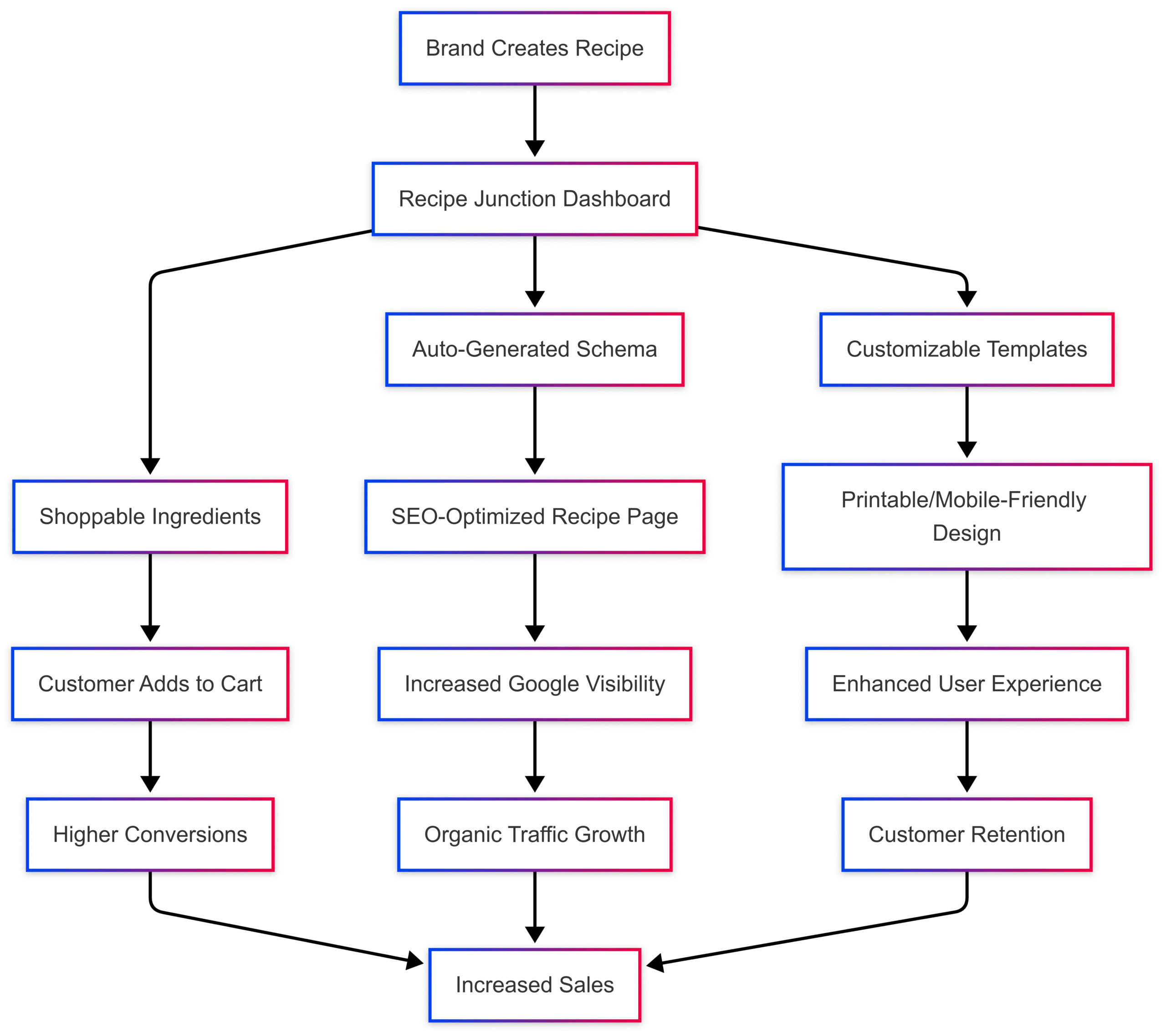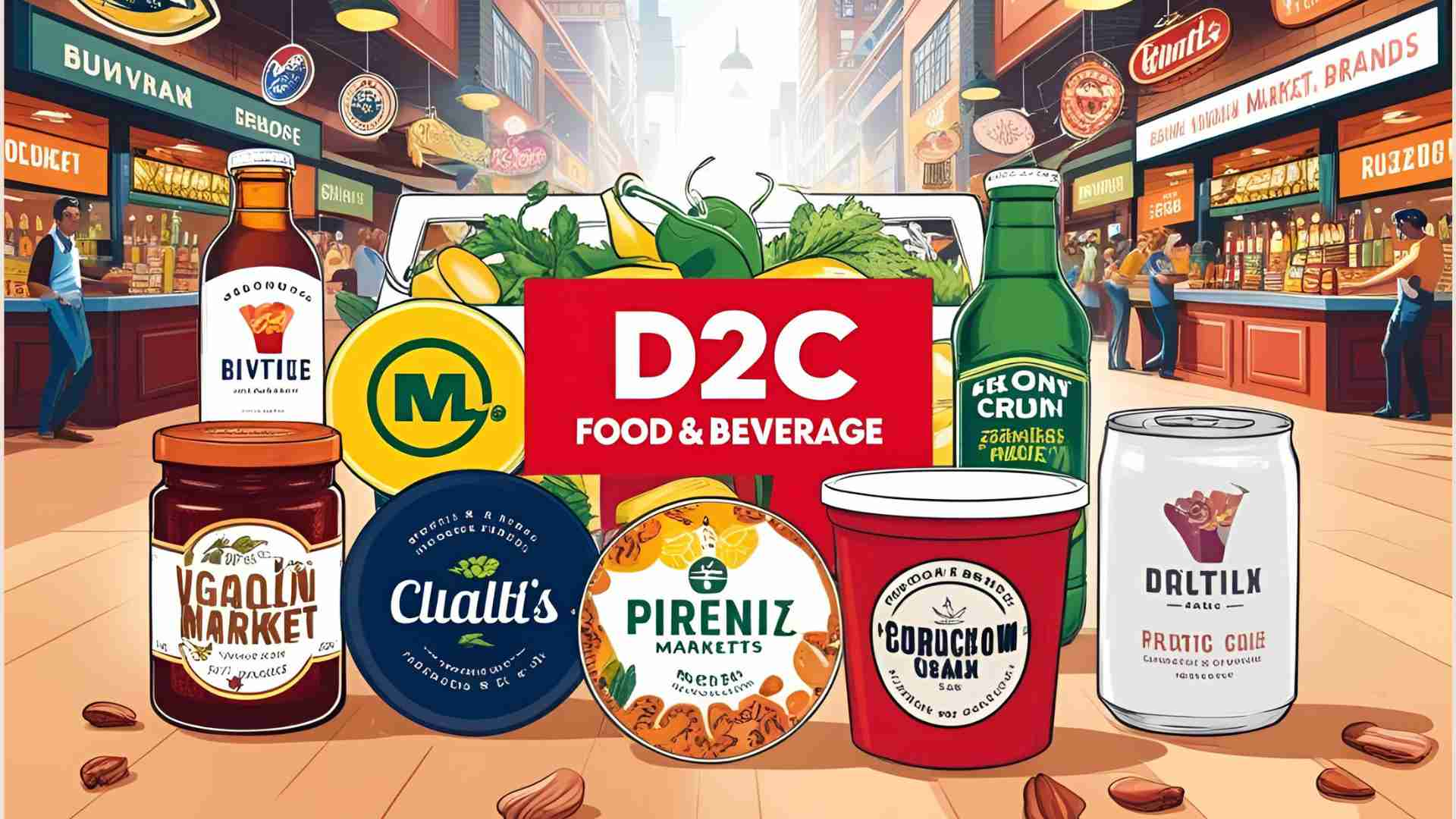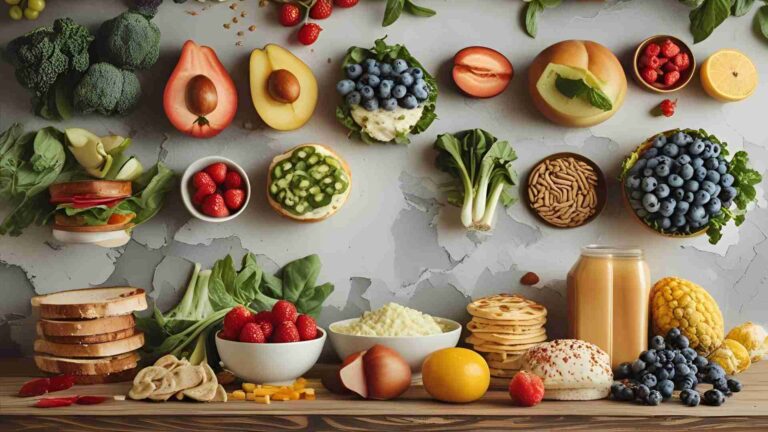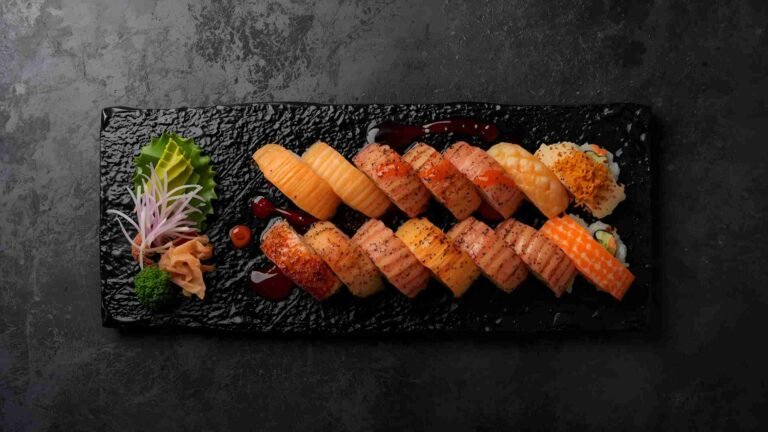The Digital Recipe for D2C Food & Beverage Brands
Discover how Recipe Junction transforms D2C food brands with shoppable recipes, SEO optimization, and analytics to boost sales and engagement.
The direct-to-consumer (D2C) food and beverage industry is undergoing a seismic shift, driven by evolving consumer preferences for convenience, health-conscious choices, and sustainable products. As brands pivot to meet these demands, innovative tools like Recipe Junction, a Shopify app, are redefining how D2C food brands engage with their audiences. By seamlessly integrating shoppable recipes, SEO-optimized content, and robust analytics into online stores, Recipe Junction empowers brands to inspire, convert, and retain customers. This article explores how Recipe Junction and similar platforms are revolutionizing the D2C food landscape, offering actionable strategies for brands to thrive in a competitive market projected to grow from $50.66 billion in 2023 to $195.39 billion by 2031.
The Rise of D2C Food and Beverage Brands
The D2C model has transformed the food and beverage industry by enabling brands to bypass traditional retail channels, forge direct connections with consumers, and deliver personalized experiences. This shift is fueled by several key trends:
- Consumer Demand for Convenience: Busy lifestyles have increased the need for quick, accessible meal solutions, from recipe kits to ready-to-cook ingredients.
- Health and Sustainability Focus: Consumers are prioritizing organic, whole-grain, and eco-friendly products, driving demand for transparent sourcing and healthier options.
- Digital Adoption: The surge in e-commerce, accelerated by the COVID-19 pandemic, has made online shopping a staple, with UK online grocery sales alone projected to reach £78.9 billion.
D2C brands are capitalizing on these trends by leveraging platforms like Shopify Plus and tools like Recipe Junction to create engaging, scalable, and conversion-focused experiences. Unlike traditional retail, D2C allows brands to control their narrative, reduce costs, and build loyalty through tailored content and seamless shopping experiences.
Why Recipes Are a Game-Changer for D2C Food Brands
Recipes are more than just cooking instructions; they are a powerful marketing tool that bridges inspiration and action. For D2C food brands, recipes serve multiple purposes:
- Showcase Product Versatility: Recipes highlight creative uses for products, encouraging cross-selling. For example, a brand selling organic coconut oil can feature it in recipes for smoothies, baked goods, and savory dishes, inspiring customers to explore new uses.
- Drive Engagement: Recipes foster emotional connections by positioning brands as trusted culinary advisors. User-generated content, such as recipe contests, further strengthens community ties.
- Boost Conversions: Shoppable recipes simplify the purchase journey, allowing customers to add ingredients to their carts directly from a recipe page, increasing average order value (AOV).
- Enhance SEO: Well-optimized recipes with rich snippets and structured data improve search engine rankings, attracting organic traffic from platforms like Google and Pinterest.
- Build Loyalty: Regular recipe updates, seasonal ideas, and newsletters keep customers engaged, fostering repeat purchases and long-term loyalty.
- Provide Insights: Analytics from recipe engagement reveal customer preferences, enabling brands to refine their content and product strategies.
By integrating recipes into their e-commerce strategy, D2C brands can transform casual browsers into loyal customers, as demonstrated by platforms like Archana’s Kitchen, which grew from a blog to a leading recipe discovery platform with over 10 million monthly users.
Recipe Junction: The Ultimate Tool for D2C Food Brands
Recipe Junction is a Shopify app designed to empower D2C food brands by turning their blogs into dynamic, shoppable recipe platforms. Its advanced features address the unique challenges of converting visitors into buyers while enhancing brand visibility and engagement. Below, we explore its key functionalities and how they drive success.
1. Automatic Recipe Schema for SEO
Recipe Junction automatically generates recipe schema, a form of structured data that enhances visibility in search engine results. This schema enables recipes to appear as rich snippets on Google, displaying cooking times, ratings, calorie counts, and images directly in search results.
- How It Works: When a recipe is created, Recipe Junction embeds schema markup compliant with Google’s standards, requiring no technical expertise from the brand.
- Benefits: Rich snippets increase click-through rates (CTR) by up to 30%, according to studies, as they make search results more visually appealing and informative.
- Example: A recipe for “Gluten-Free Chocolate Cake” might appear with a star rating, prep time, and a thumbnail image, enticing users to click and explore.
This feature ensures that D2C brands rank higher on search engines, driving organic traffic without the need for costly advertising campaigns.
2. Shoppable Recipe Cards
One of Recipe Junction’s standout features is its shoppable recipe cards, which integrate add-to-cart buttons alongside ingredients, creating a frictionless path to purchase.
- How It Works: Each ingredient in a recipe links directly to a product in the brand’s Shopify store. For example, a recipe for “Vegan Pesto Pasta” might link to the brand’s organic basil, olive oil, and pasta.
- Benefits: This seamless integration reduces cart abandonment by simplifying the buying process. Studies show that streamlined checkouts can increase conversions by up to 35%.
- Pro Tip: Use high-quality product images and compelling descriptions to enhance the appeal of linked products, encouraging impulse purchases.
By turning recipes into sales opportunities, Recipe Junction helps brands boost AOV and convert inspiration into revenue.
3. Beautiful, Printable Recipe Designs
Recipe Junction offers professionally designed, customizable templates that ensure recipes look stunning on all devices and in print.
- Features: Templates are optimized for readability, mobile responsiveness, and brand consistency. Customers can print recipes for offline use, enhancing accessibility.
- Benefits: A visually appealing, user-friendly design increases engagement and encourages repeat visits. Printable formats cater to users who prefer physical copies, broadening the audience reach.
- Customization: Brands can tailor templates to match their aesthetic, ensuring a cohesive brand experience across all touchpoints.
This feature enhances user experience, making recipes both functional and visually captivating, which is critical for retaining customers in a competitive market.
4. Detailed Recipe Analytics
Data-driven decision-making is essential for D2C brands, and Recipe Junction provides comprehensive analytics to track recipe performance.
-
Metrics Tracked:
- Views and time spent on recipe pages
- Click-through rates on product links
- Social shares and engagement metrics
- Sales attribution from recipes
- Benefits: These insights allow brands to identify top-performing recipes, optimize underperforming ones, and tailor content to audience preferences. For example, if a “Keto Avocado Toast” recipe drives high engagement, brands can create similar content to replicate success.
- Use Case: A brand might notice that recipes with video tutorials generate 50% more sales, prompting a shift toward video content.
By leveraging analytics, brands can refine their content strategy, maximize ROI, and align offerings with customer needs.
5. Intuitive Recipe Creation Dashboard
Recipe Junction’s user-friendly dashboard simplifies content creation, allowing brands to focus on creativity rather than technical details.
- Features: Automated formatting, SEO optimization, and product linking streamline the recipe creation process.
- Benefits: Saves time and ensures consistency across recipes, enabling brands to scale their content libraries without sacrificing quality.
- Scalability: The dashboard supports large recipe catalogs and integrates seamlessly with Shopify’s e-commerce tools, making it ideal for growing brands.
This feature empowers brands of all sizes to create professional-grade content with minimal effort, leveling the playing field in the D2C space.
6. Searchable Recipe Library
Recipe Junction’s searchable library allows customers to find recipes based on dietary preferences, meal types, or preparation times.
- Features: Custom filters for gluten-free, vegan, keto, or quick meals enhance discoverability.
- Benefits: Keeps customers engaged longer, improving site dwell time and SEO rankings. A well-structured library also encourages exploration, increasing the likelihood of product purchases.
- Example: A customer searching for “quick vegan dinners” might discover a recipe for “15-Minute Chickpea Curry,” with all ingredients available for purchase.
This feature caters to diverse customer needs, making the brand a go-to resource for culinary inspiration.
7. Social Sharing Integration
Recipe Junction optimizes recipes for sharing on platforms like Pinterest, Instagram, and Facebook, amplifying brand reach.
- Features: One-click sharing buttons and visually optimized formats encourage users to share recipes with their networks.
- Benefits: Social sharing drives organic traffic and boosts brand visibility. For example, a visually stunning recipe image shared on Pinterest can attract thousands of new visitors.
- Pro Tip: Include high-resolution images and catchy titles to maximize shareability and engagement.
This feature leverages the power of social media to expand a brand’s audience and drive traffic back to the Shopify store.
8. Mobile Optimization
With over 50% of online shoppers using mobile devices, Recipe Junction ensures all recipes are fully optimized for smartphones and tablets.
- Features: Responsive design, fast-loading pages, and touch-friendly interfaces enhance the mobile experience.
- Benefits: Improves user satisfaction and reduces bounce rates, which are critical for SEO and conversions. Mobile-friendly recipes also cater to on-the-go shoppers.
- Impact: Studies show that mobile-optimized sites can increase conversion rates by up to 20%.
This feature ensures that D2C brands remain accessible and engaging across all devices, capturing a significant portion of the market.
9. AI-Generated Recipes
Recipe Junction’s AI capabilities enable brands to deliver personalized, innovative content at scale.
-
Features:
- Personalized recommendations based on customer preferences and purchase history
- AI-generated recipe ideas using the brand’s products
- Automated content creation to populate recipe libraries
- Benefits: Saves time, enhances creativity, and keeps content fresh. For example, AI might suggest a “Spiced Millet Pancake” recipe to align with trending superfoods.
- Impact: Personalized content can increase engagement by up to 40%, according to marketing studies.
This feature positions brands as forward-thinking innovators, meeting the demand for tailored culinary experiences.
Case Study: Archana’s Kitchen
Archana’s Kitchen, founded by Archana Doshi, exemplifies the power of recipes in the D2C space. Starting as a blog in 2007, it evolved into a leading recipe discovery platform with over 10 million monthly users. In 2021, Archana’s Kitchen launched a D2C product line of healthy baking mixes, leveraging its recipe platform to drive sales.
- Strategy: The brand used recipes to showcase its zero-maida, whole-grain baking mixes, linking ingredients directly to its Shopify store.
- Results: High engagement from recipe content translated into increased product sales, with seamless payment integration via Razorpay ensuring a smooth customer experience.
- Key Takeaway: Recipes build trust and inspire purchases, making them a cornerstone of Archana’s Kitchen’s D2C success.
This case study highlights how Recipe Junction’s features, such as shoppable recipes and analytics, can replicate similar success for other D2C brands.
Case Study: Liquid Death
Liquid Death, a disruptive bottled water brand, partnered with UN/COMMON Agency to redesign its Shopify Plus site, incorporating recipe-inspired content to enhance engagement.
- Strategy: The revamped site included recipes featuring Liquid Death’s water in cocktails and cooking, with shoppable links to products.
- Results: Improved site speed and user experience led to a 25% increase in conversions, with recipe pages driving significant traffic.
- Key Takeaway: Creative recipe integration can differentiate even non-traditional food brands, boosting engagement and sales.
Chart: Recipe Junction Workflow
Below is a visual representation of how Recipe Junction integrates into a D2C brand’s workflow, streamlining content creation and sales.

Pricing and Specifications
Recipe Junction offers tiered pricing to suit brands of all sizes:
| Plan | Price (Monthly) | Key Features |
|---|---|---|
| Starter | $29 | 50 recipes, basic SEO, shoppable cards, analytics, 1 template |
| Pro | $79 | 200 recipes, advanced SEO, AI-generated recipes, 5 templates, social sharing |
| Enterprise | $199 | Unlimited recipes, multi-language support, custom integrations, priority support |
-
Specifications:
- Compatibility: Shopify and Shopify Plus
- Scalability: Supports unlimited traffic and recipe libraries
- Integration: Seamless with Shopify’s checkout and inventory systems
- Support: 24/7 customer support, with dedicated account managers for Enterprise plans
These plans ensure that brands can scale their recipe marketing efforts as they grow, with flexible options to meet diverse needs.
The Broader D2C Food Landscape
The success of Recipe Junction aligns with broader trends in the D2C food industry:
- Smart Kitchen Devices: AI-enabled appliances like delishUp⤴️ and smart dosa makers simplify cooking, complementing recipe platforms by providing nutritional data and automation.
- Healthy Ingredients: Brands like Licious and Cowvathi offer organic and sustainable ingredients, which pair well with shoppable recipes to drive sales.
- Recipe Kits: Companies like SimplyCook, acquired by Nestlé, highlight the growing popularity of recipe kits, which combine pre-portioned ingredients with recipes for convenience.
- Personalized Nutrition: Apps like HealthifyMe and MyFitnessPal provide nutritional insights, enhancing the value of recipe platforms by catering to dietary needs.
These trends underscore the importance of integrating technology, content, and commerce to meet modern consumer demands.
Challenges and Solutions
D2C food brands face several challenges in leveraging recipes effectively:
-
Challenge: Creating engaging, SEO-optimized content requires time and expertise.
- Solution: Recipe Junction’s AI tools and automated schema reduce the workload, enabling brands to focus on creativity.
-
Challenge: Converting recipe browsers into buyers.
- Solution: Shoppable recipe cards and seamless checkout integration streamline the purchase process.
-
Challenge: Scaling content for a growing audience.
- Solution: Recipe Junction’s scalable dashboard and multi-language support accommodate expanding brands.
By addressing these challenges, Recipe Junction empowers brands to compete in a crowded market.
Future Trends in D2C Food and Beverage
The D2C food industry is poised for continued growth, with several trends shaping its future:
- Sustainability Focus: Consumers increasingly demand eco-friendly packaging and sourcing, which brands can highlight through recipe storytelling.
- AI and Personalization: AI-driven recipes and meal plans will become standard, offering hyper-personalized experiences.
- Global Expansion: Multi-language recipe platforms will enable brands to tap into international markets.
- Augmented Reality (AR): AR-enabled recipes could allow customers to visualize dishes before cooking, enhancing engagement.
Recipe Junction is well-positioned to support these trends, offering scalable, innovative solutions for forward-thinking brands.
Conclusion
In the fast-evolving D2C food and beverage industry, Recipe Junction stands out as a transformative tool for brands seeking to engage customers, drive sales, and build loyalty. By combining SEO-optimized recipes, shoppable cards, analytics, and AI-driven content, it empowers brands to create meaningful connections with their audiences. As demonstrated by success stories like Archana’s Kitchen and Liquid Death, recipe-driven strategies can unlock significant growth in a market projected to reach $195.39 billion by 2031. For D2C food brands, adopting tools like Recipe Junction is not just a strategy—it’s the digital recipe for sustained success in a competitive landscape.
Please share these The Digital Recipe for D2C Food & Beverage Brands with your friends and do a comment below about your feedback.
We will meet you on next article.
Until you can read, How to Create Shoppable Recipe Cards on Shopify






